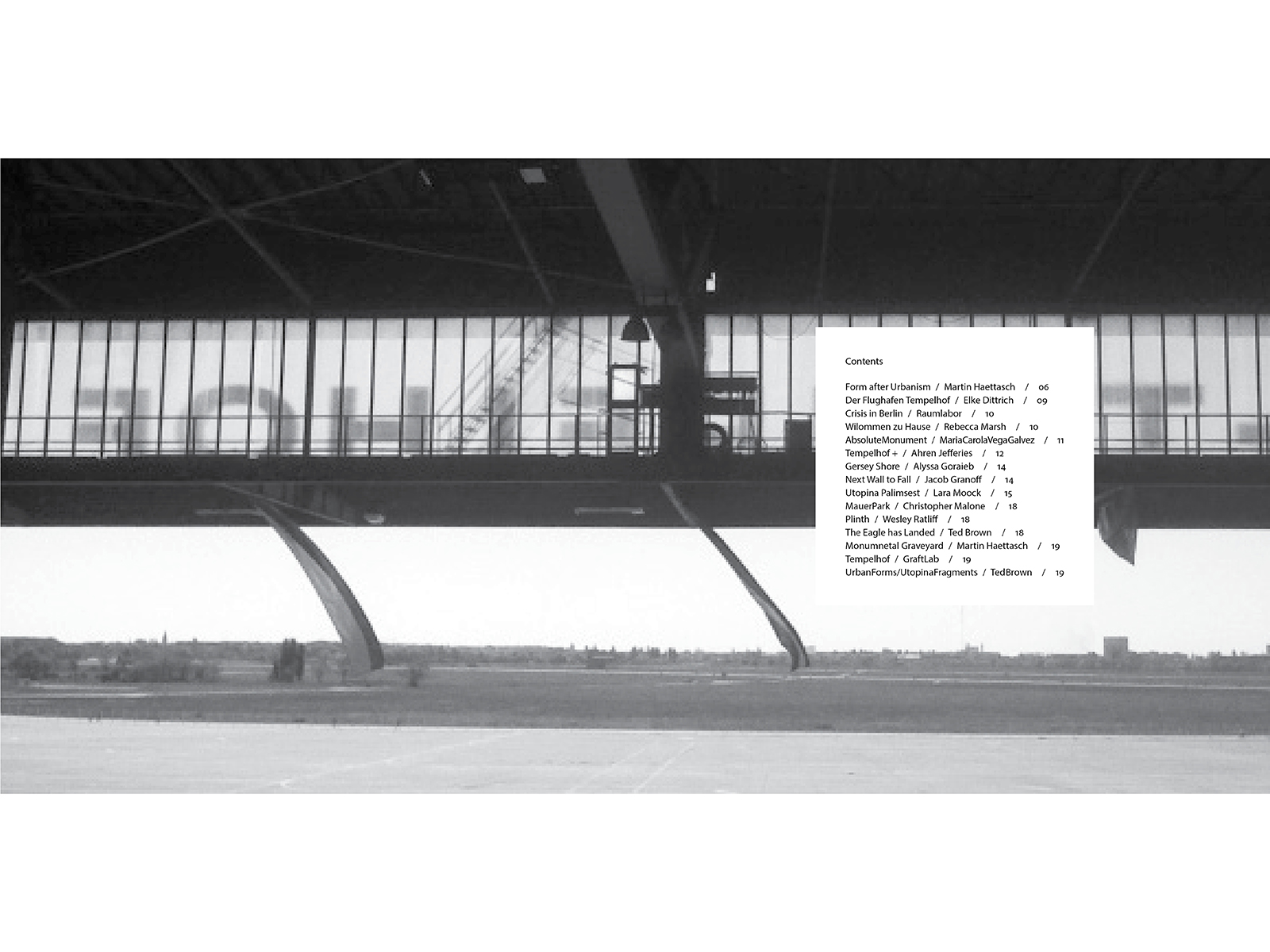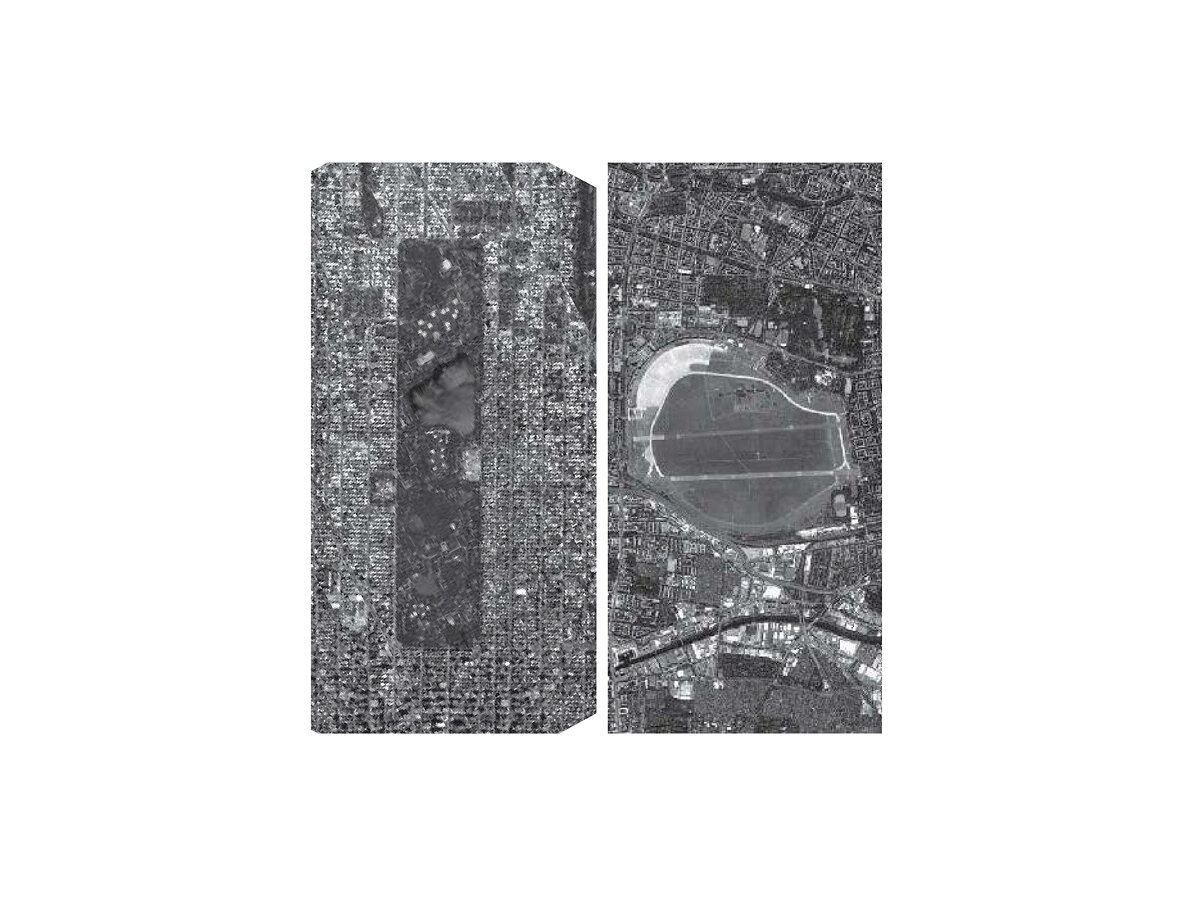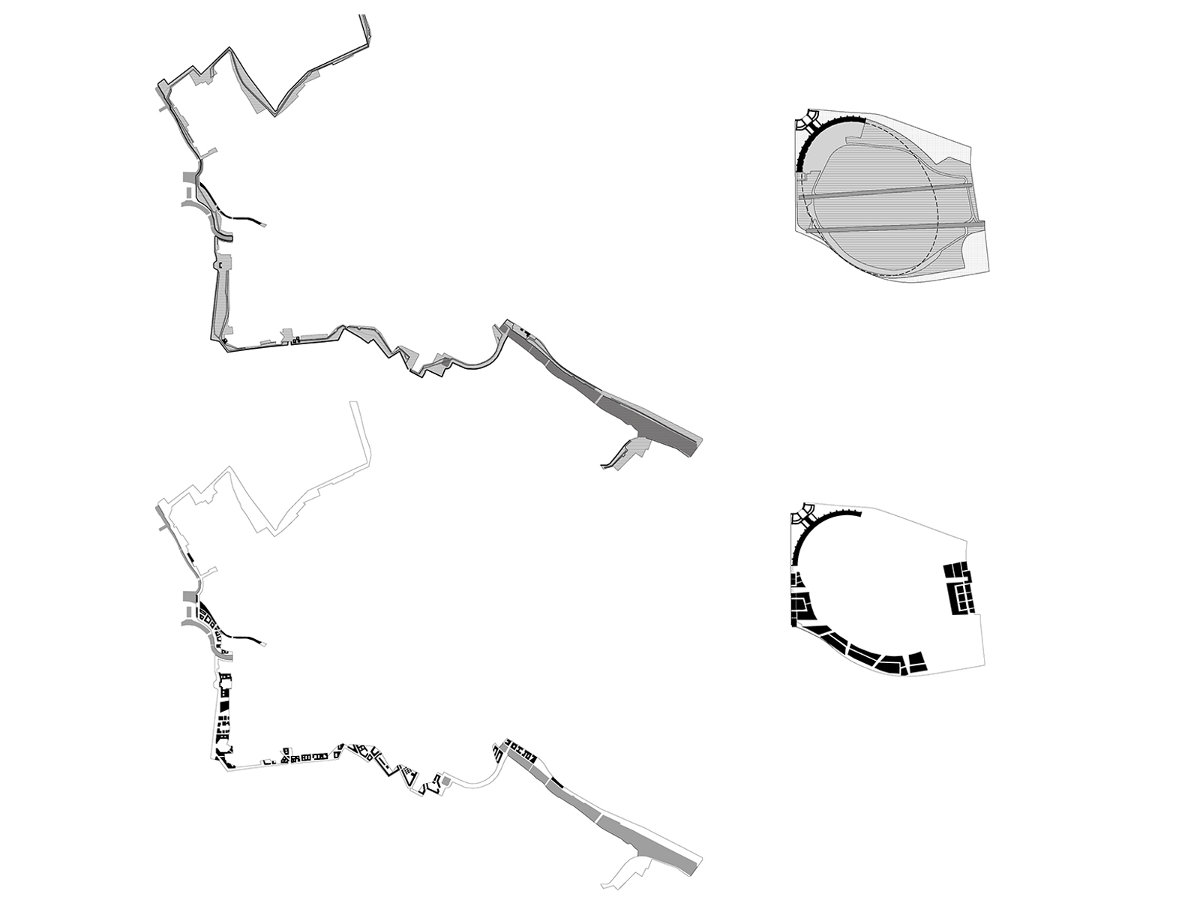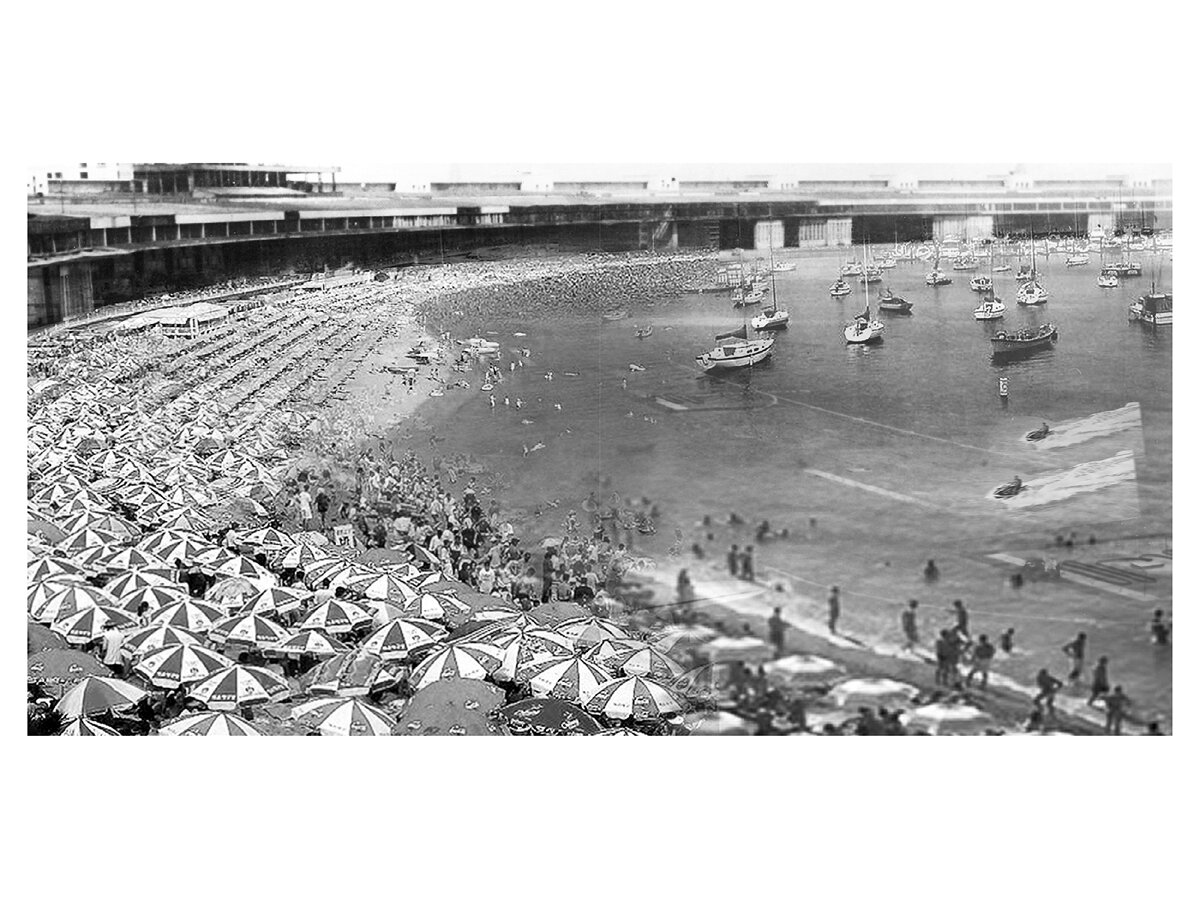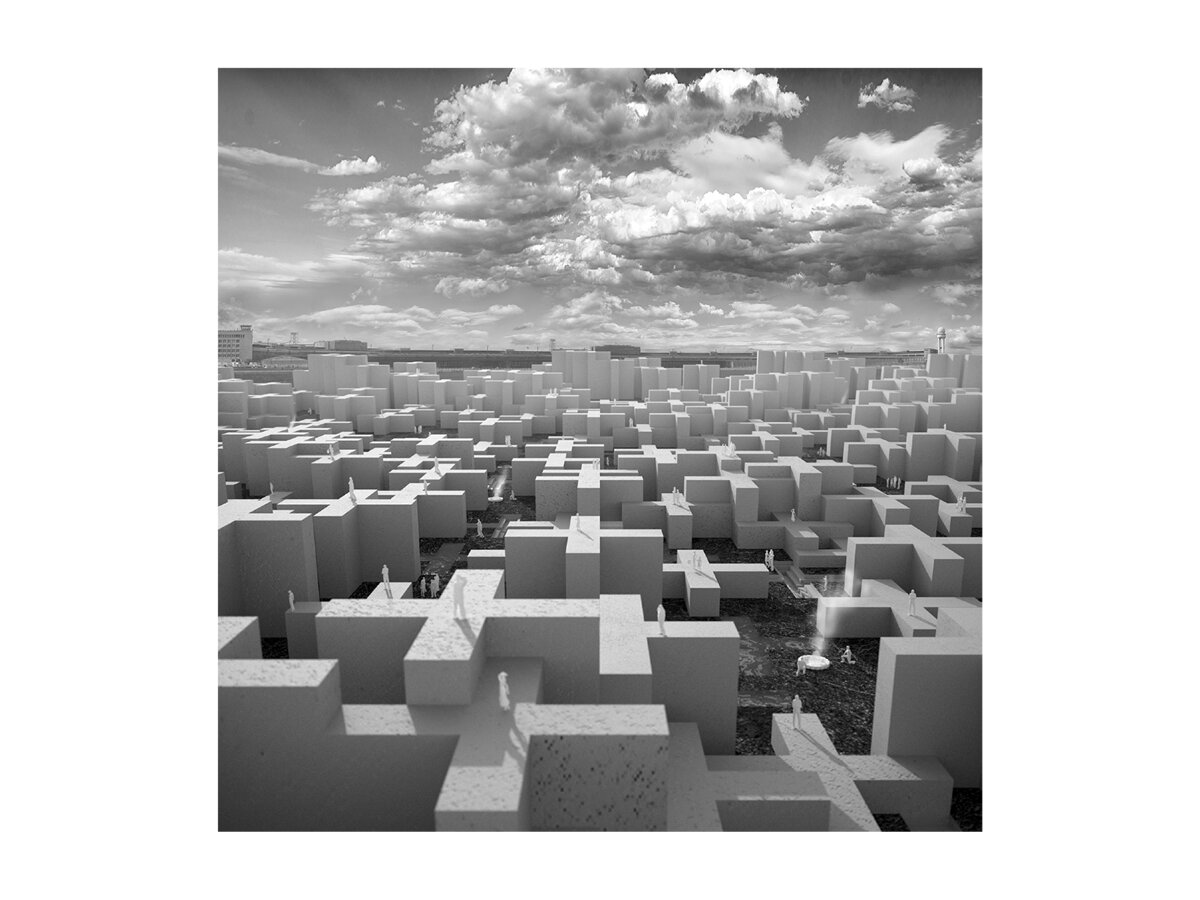
TEMPELHOF
Publication
edited Volume
Tempelhof: Alternative Futures
Martin Hättasch, Ted Brown, James L. Hepokoski (eds.)
Berlin / Syracuse, NY
Forthcoming
supported by a Syracuse University Faculty Research Grant & SU Abroad
Contributors: Elke Dittrich (Berlin), Wolfram Putz/Graftlab (Berlin), Axel Timm/Raumlabor (Berlin), Wehnua Shi (Hamilton/Shanghai), Ted Brown (Syracuse), Martin Hättasch (Austin), Alyssa Goraieb, Rebecca Marsh, Maria Carola Vega, Jacob Granoff, Lara Mook, Christopher Malone, Ahren Jeffries, Wesley Ratliff
The publication “Tempelhof: Alternative Futures” expands on research begun during the 2013 summer seminar “Berlin – Urban Forms/Utopian Fragments” taught by Martin Hättasch and Ted Brown in the context of Syracuse University’s SU Abroad program. It brings together a number of positions, reflections and projections dealing with the recently closed inner city airport of Berlin Tempelhof in the context of Berlin’s fragmented ideological and architectural landscape.
An area comparable to Central Park in NYC, Tempelhof Airport is one of the early European airfields of the 1920s. Designed by Ernst Sagebiel, the current structure was built during the Nazi regime as part of the proposed North/South axis under the urban design direction of Albert Speer. “The mother of all airports” was integrated into a monumental plan, clearly understood as an urban threshold to the city of Berlin. Within West Berlin after WWII, the airport was a lifeline to the west for 15 months during the Soviet blockade in 1948/49. Finally closed to air traffic in 2008, in 2009, The Land of Berlin bought the airport without a clear program for its future. A year later, the old airfield opened to the public as a park. Although in 2014 the city’s Master Plan for the partial development of the former airfield was rejected in a popular vote in favor of leaving the area publically accessible and untouched, the debate continues. Real estate pressures and housing shortage remain high in Berlin, making Berlin’s last great urban void even more an object of conflicting desires.
Images: Alyssa Goraieb [4], Ahren Jeffries [5]
